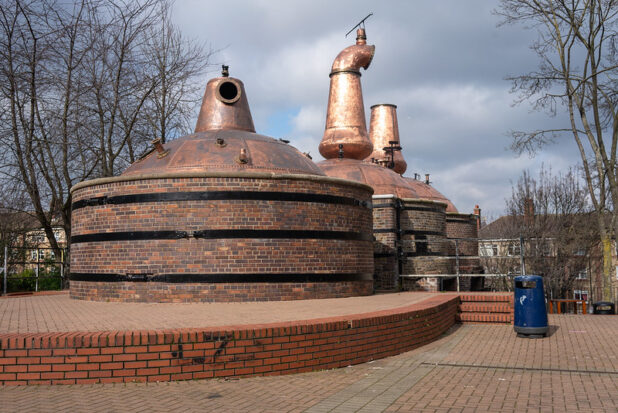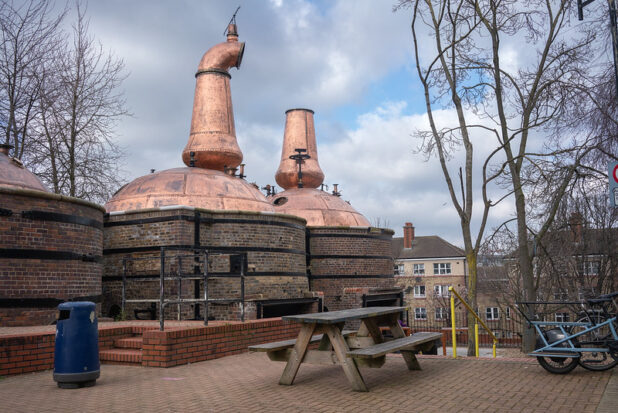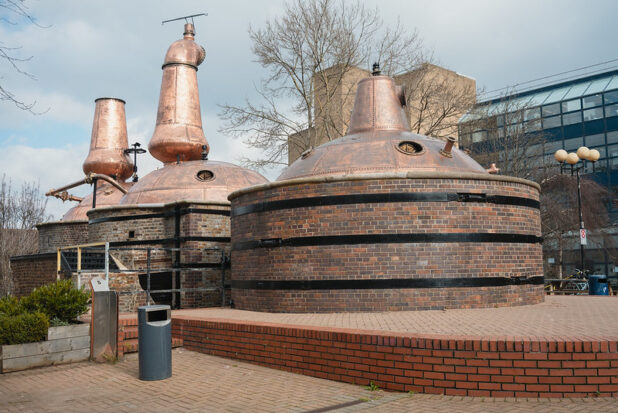A Journey through Time: The History of NCAD College
Nestled in the heart of Dublin’s historic Thomas Street stands a beacon of artistic innovation and creativity the National College of Art and Design (NCAD). With a rich history spanning over 250 years
Founded in 1746 as the “Dublin Society’s School of Drawing,” NCAD has evolved significantly over the centuries, adapting to the changing landscape of art and design education. Initially established to provide instruction in drawing and fine arts, the institution gradually expanded its curriculum to encompass a wide range of disciplines, including sculpture, ceramics, textiles, and digital media.
In 1971, NCAD moved to its current location on Thomas Street, where it continues to thrive as one of Ireland’s premier centres for art and design education. The campus itself is a fusion of old and new, with historic buildings seamlessly integrated with modern facilities. Throughout its history, NCAD has been a breeding ground for some of Ireland’s most renowned artists and designers. Among its famous alumni is the iconic stained glass artist Harry Clarke, whose beautiful creations have left an indelible mark on the world of decorative arts. Clarke’s work, characterized by its exquisite detail and vivid imagery, continues to captivate audiences around the world. Another notable figure to emerge from NCAD is the acclaimed fashion designer Paul Costelloe. Renowned for his elegant and timeless designs, Costelloe has achieved international acclaim, dressing royalty, celebrities, and discerning clientele alike. His career serves as a testament to the quality of education offered at NCAD. In addition to these luminaries, NCAD has nurtured countless other talents who have made significant contributions to the fields of art, design, and visual culture.
From painters and sculptors to graphic designers and animators, the college’s alumni community is a testament to the enduring legacy of creativity and innovation fostered within its walls. From its humble beginnings as a school of drawing to its current status as a leading centre for creativity and innovation, the college continues to shape the cultural landscape of Ireland . But maybe just as interesting as the art and artists themselves is perhaps the historic buildings of its college campus where once stood the famous Power & Son distillery .Power & Son was a historic producer of Irish whiskey, standing alongside John Jameson, William Jameson, and George Roe as one of the big four Dublin distilleries dominating the worldwide whiskey trade during the 19th century. James Power, an innkeeper operated a public house at 109 Thomas St in Dublin which is where the origin of the term “pub” comes from. In 1791, Power added a small still to his establishment, initially producing about 6,000 gallons of whiskey annually, primarily sold on-site.
By 1822, the company renamed John Power & Son relocated to a standalone distillery on John’s Lane. The passage of the Excise Act in 1823 marked the beginning of Irish dominance in the global whiskey market. Production rapidly expanded, reaching 300,000 gallons per year by 1833 and peaking at over one million gallons by 1900. The distillery, covering 6 acres in central Dublin, boasted five pot stills, including two of the largest in the world at 25,000-gallon capacity each. The late 19th century saw the peak of Power’s success, but various factors such as World War I, Irish independence, Prohibition in the United States, and government policies led to a decline in global Irish whiskey sales. In 1966, John Power & Son merged with John Jameson & Son and the Cork Distilleries Company to form Irish Distillers Ltd, all distilling operations were centralized at a new facility in Middleton, Cork, beginning in 1975. Powers whiskey has been produced at the Middleton distillery ever since.
Another fantastic building to be part of the campus today with an equally interesting story to tell is that of the old Thomas Street fire station opened on January 21, 1914, as part of a plan conceived by Chief Officer Captain Purcell back in 1898. This initiative aimed to establish a network of fire stations across Dublin, dividing the city into quarters and assigning a fire station to each. When Captain Purcell assumed leadership of the brigade in 1892, there were only two fire stations, both located on the South side of the city one near White Tavern St. and the other at the old headquarters building. The White Tavern Street Station, dating back to the days of the Waterworks Brigade in the 1850s, was the oldest in the city but had the shortest operational life due to its challenging location been that it was on a very steep hill and in the event of a fire the fireman had to walk beside the horse because the horse couldn’t pull both fire, fire, engine and its crew up the hill. Thomas Street station, upon its opening marked a significant shift as the first Dublin fire station built without provisions for horses signalling the transition to motorized firefighting. This move was part of an effort to modernize the Dublin Fire Brigade with the acquisition Dublin’s second motor fire engine stationed at this new facility.
The year 1913, when the station was under construction, was notable in Dublin’s history as the year of the Lockout, during which the brigade responded to various incidents, including the George Street housing collapse and the Bloody Sunday riots. Despite challenges, such as responding to fires beyond the city limits, the Dublin Fire Brigade remained vigilant, even during significant events like the 1916 Rising. On the 24th of April 1916, the brigade attended to the first fire of the rising that of the fire in the magazine Fort in the Phoenix Park. Throughout Easter week of 1916, the brigade was on continuous duty, responding to major fires such as the one at Bridge St. and Ushers Quay. The station’s involvement in historic events continued with been called to the Customs House fire in 1921.However, by 1945, the station closed due to Dublin’s expansion and urban planning, rendering it obsolete. Despite its closure, Thomas Street Fire Station left a lasting legacy in Dublin’s firefighting history.
So next time you stroll down Thomas street take a moment to appreciate the old Thomas street fire station with its stunning arcaded of Mount Charles yellow sandstone that once housed the men and fire engines that were called to action in some of Dublin’s most trying times Or wander through the carriage arch of 109 Thomas street with its blue doors this iconic entrance once part of Dublin’s industrial history now the main entrance to Irelands leading arts college with vibrant student campus, walk to the centre of the campus where you will find three stunning recently restored pot stills of the power & sons factory standing as historic landmarks. For those less inclined towards history there is an excellent graduate show held every year where NCAD students from various disciplines are provided with a platform to exhibit their talents. With widespread media coverage and prestigious attendees from industry, arts, culture, and government. The event is a most all art lovers.












I very much enjoyed reading this article, it whet my appetite to learn some more interesting facts about our beautiful capital city. Thanks and keep up the good work.